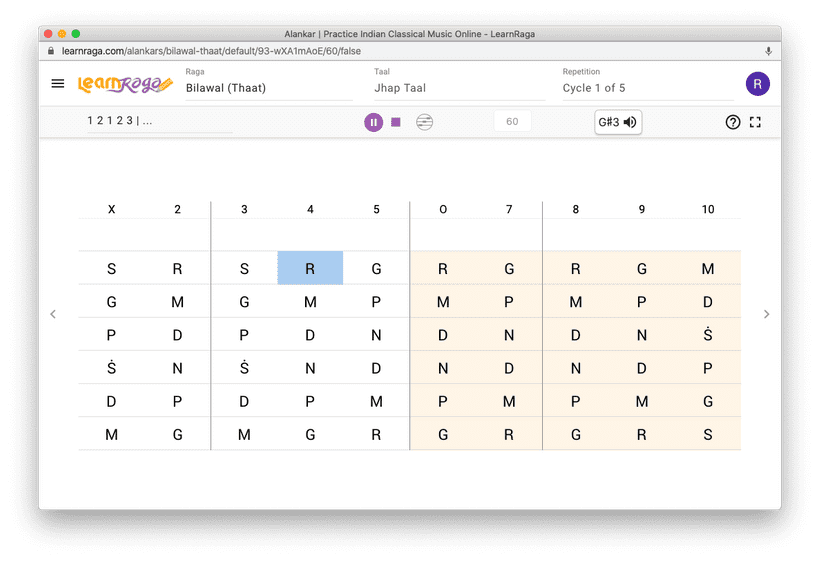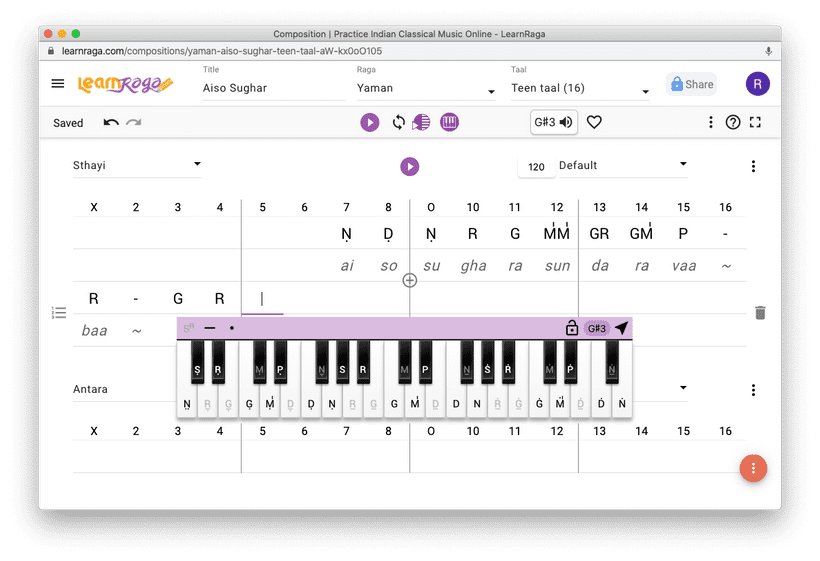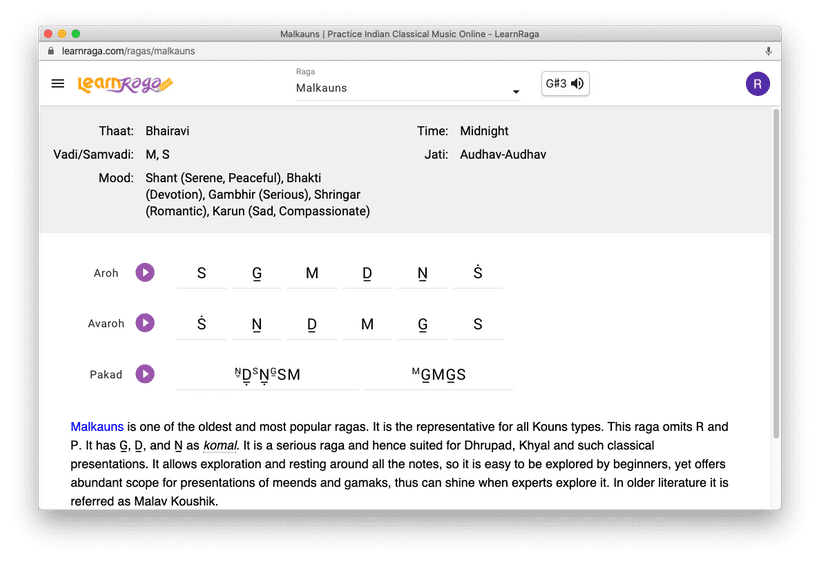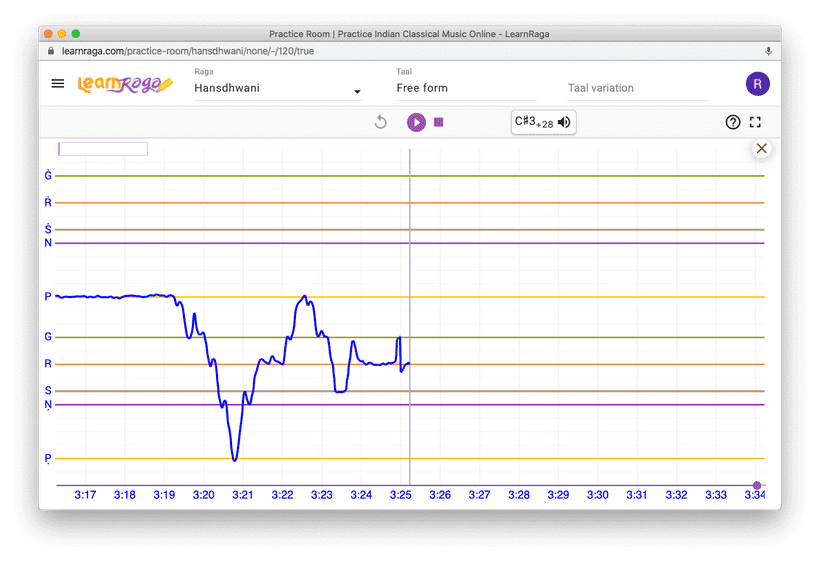Getting started with learning music
Ramnivas Laddad on March 25, 2020
Music has the power to calm the mind, reduce stress, and improve your mood. With the coronavirus going around, practicing music may be more important than even before. Indian Classical Music, which has stood the test of time for centuries, is a particularly good form of music for the mind and connecting with the inner self. Currently, LearnRaga is free to all, so we hope it can serve you as a tool to help you practice music during this period of social distancing.
For the purpose of this blog, we assume that you are interested in vocal music, but the same ideas apply to instrumental music equally well.
How you use LearnRaga depends on your current skill level. So we will take a look at each level and suggest a few beneficial activities.
Beginners
You are curious about Indian Classical Music, perhaps after hearing raga-based film songs or after listening to a clip of one of the masters on YouTube.
LearnRaga provides several ways to get started with this music from the comfort of your home. At this level, your goal should be to get comfortable with notes and develop some control over producing the right pitch.
Understand the basics
If you are a total newcomer to Indian Classical Music, we highly recommend that you watch the “Basic theory of Indian Classical Music” series by Anuja Kamat. These well-presented videos walk you through the core ideas in a fun and engaging way.
Practice Alankars
Alankars (also called paltas) present notes in a certain pattern. LearnRaga offers thousands of alankars in all thaats (base scales) and many ragas (melodic forms). We suggest that you start with a tempo of 60 beats per minute or lower to absorb each note well and focus on pitch accuracy. Staying at a note for a longer time has a certain calming effect. Also, notes in an alankar phrase move in a predictable manner, giving some exercise to the brain without overwhelming it with the creative aspect of improvisation.
Hit the play button, listen to what is being played, and sing along!
Get pitch feedback
When you sing along, your subconscious will try to match your pitch to what you hear. But if you aren’t a trained musician, you may have trouble following the expected pitch. Use LearnRaga’s pitch visualizer to know how well you are singing. Put on a headset, set your computer’s audio output to it, and sing along. LearnRaga will show your pitch alongside the expected pitch in real-time. If you are off by a large amount, lower the tempo, and try again. Within a few days, you will see some significant progress.
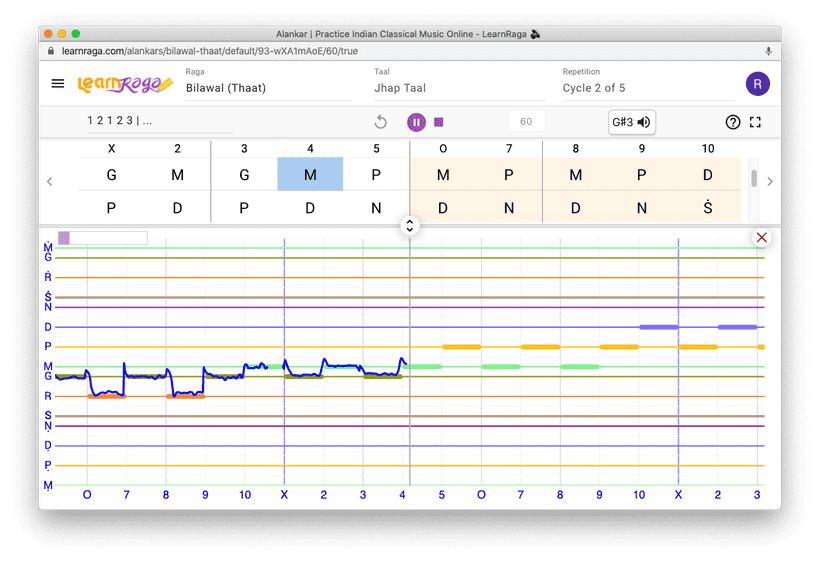
Practicing alankars gives you a foundation for singing compositions—a core part of Indian Classical Music.
Sing along with simple compositions
LearnRaga has several public compositions created by our artist advisors as well as members of the community for you to listen and learn. This Bhoop Composition is great for getting started. At this level, it will suffice if you just play the first two sections: Sthayi and Antara. If you have trouble keeping up, lower the tempo and practice. In no time, you will be able to play by memory and start enjoying it.
If you diligently follow these steps, soon you will be able to appreciate what this music can do for you.
Intermediate student
You have been practicing for a few years, know a few compositions, but you notice that you have a long way to go before you have mastery over it.
You can use LearnRaga’s many features to effectively use your time during practice. If you are learning through a teacher, you can use LearnRaga to augment that learning.
Practice Alankars in different thaats and ragas
First you can try alankars in different thaats like the Bhairav Thaat. Then you can proceed to alankars in particular ragas. Bhoop, Durga, and Hansdhwani are a great way to start with raga alankars. Follow these with Brindavani Sarang, where the use of both Nishads (N) in different movements exercises the brain in a new way.
Once you are comfortable with the alankars you are practicing, you can increase the tempo to challenge yourself. But please don’t raise the tempo if that sacrifices your pitch accuracy.
Practice Compositions with pitch feedback
You probably have learned quite a few compositions by now. Why not put those compositions in LearnRaga? You may keep a composition private (the LearnRaga default), share with your friends, or even with all users of LearnRaga—your choice.
Once created, you can play them along as well as get real-time pitch feedback.
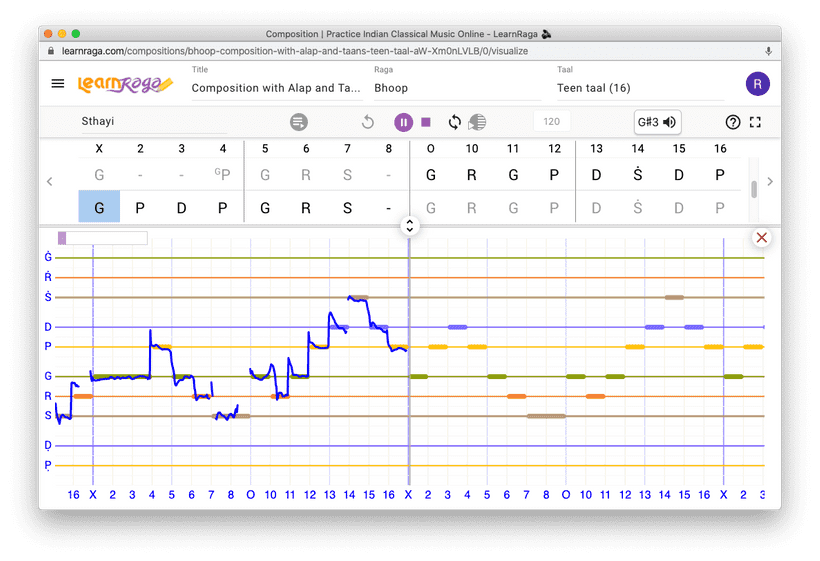
When you practice this way, you will be surprised how quickly your singing starts to precisely hit the composition notes and sound even more pleasant.
Get to know ragas
LearnRaga features information about several ragas: their aroh/avaroh, pakad, associated time/season, etc. Go through some of the ragas to understand a few nuances.
At this point, also make sure that you listen to performances of various artists. YouTube is filled with excellent collections from masters. Some YouTube channels we recommend are Basant Bahar, Darbar Festival, First Edition Arts, Sangeetveda1, and Raju Asokan.
Advanced Student
You have been practicing for many years and may have even presented in a small concert. By now you probably realize that there is no end to mastering this music—it’s a lifelong journey.
LearnRaga is here to help you through this period through several advanced features such as control over tuning and tools to capture nuances in your compositions.
Practice Alankars at a higher tempo
Maintaining pitch accuracy at a higher tempo takes significant practice. Use the pitch visualizer to try alankars at a higher tempo to see where you stand and improve from there. Once you can maintain good pitch at higher tempos, your taans will sound clean and melodious.
Improvise alaps and compositions
For alaps, head over to the practice room, select the raga you intend to explore and sing along with tanpura. If you wish to see how you are singing, turn on the visualizer, and see how the chart moves as you sing. You can also listen to a recording of yourself once you are done with your practice.
For compositions, you can practice with the improvisation mode turned on. You will see the composition as a reference and, if you like, you can even turn off the beat highlighting to practice recognizing the current beat by ear.
Create your own compositions
LearnRaga makes it easy to enter your compositions with tools to tweak notes, cut/copy/paste portions, add lyrics, and more. So let your creativity flow! Note that you can undo/redo any changes, which is great for trying out new ideas. If you like, you can share those compositions with your friends and teachers to get their feedback. We’d love to see the compositions you create and feature them in future blog posts, please share them with us.
If you face any issues or have any suggestions on how we could do better, contact us.

